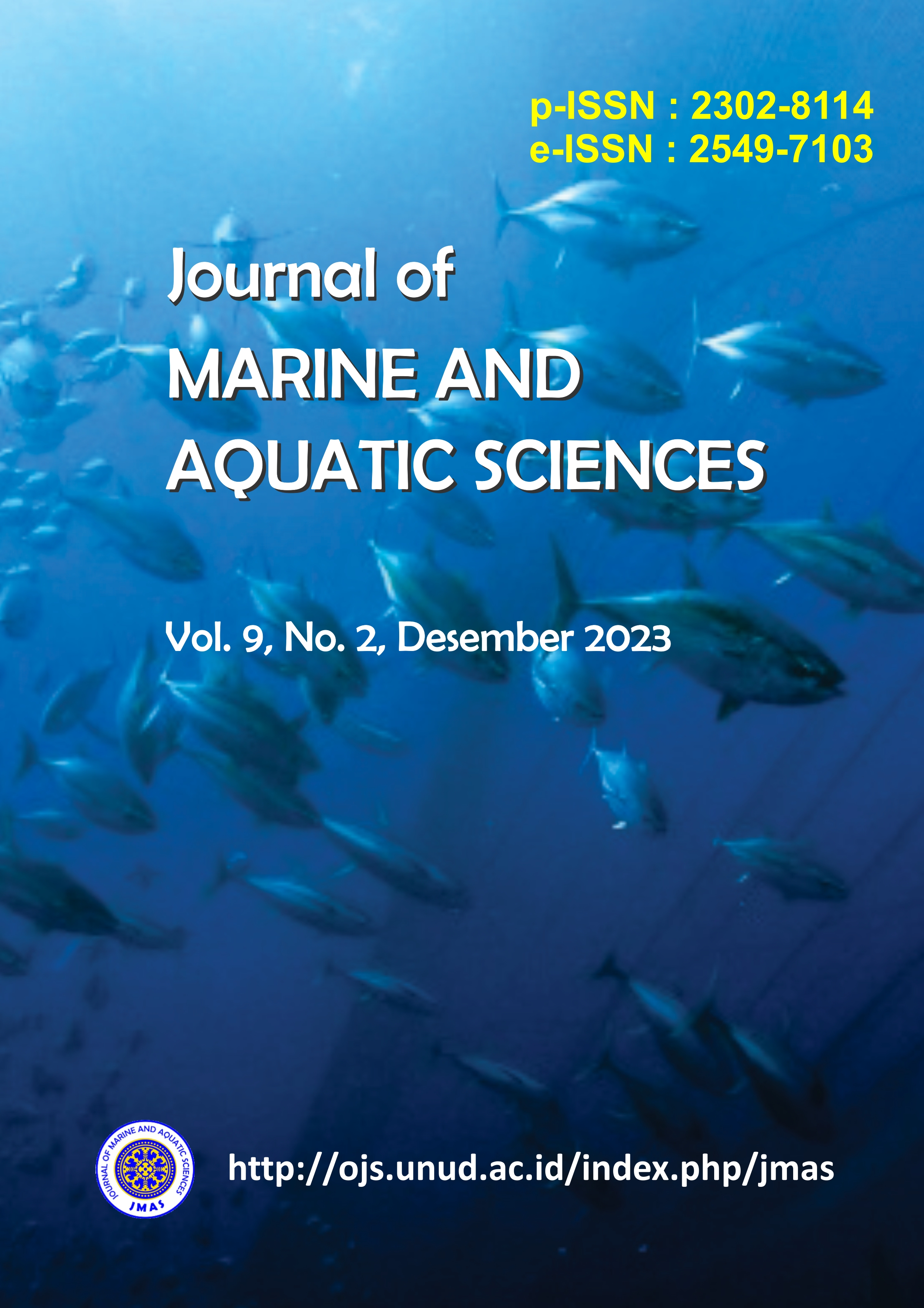Analisis Aspek Ekobiologi Ikan Kakatua (Scaridae) di Perairan Pulau Tikus Kota Bengkulu
Abstract
The large potential of marine fisheries owned by the City of Bengkulu can be an economic source for the local community. The fish potential comes from pelagic fish and reef fish. One of the reef fish is the parrot fish (Scaridae). Parrot fish in Bengkulu City are obtained from Tikus Island which are sold on Malabero Beach. The purpose of this study was to analyze the ecobiological aspects of parrot fish (Scaridae) in Tikus Island waters, Bengkulu City. The results of this study are expected to provide information in the form of valid data regarding the ecobiological aspects of parrot fish (Scaridae) in Tikus Island waters, Bengkulu City. In this study, data collection to look at ecological or environmental aspects was carried out by direct observation in the field at 3 stations, while biological aspects, namely food habits (amount/type of food), were observed through a microscope in the laboratory. The results of water parameter measurements, namely the temperature at station 1 ranged from 28-29 0C, station 2 is 29 0C, station 3 is 29 0C. pH value at station 1 is 7.0-7.3, station 2 is 7.3-7.7, station 3 is 6.5-7.1. Salinity values at station 1 is 31 ppt, station 2 is 30 ppt and station 3 is 31 ppt. Dissolved oxygen (DO) at station 1 ranged from 5.6-6.3 mg/L, station 2 5.2-5.3 mg/L and station 3 5.6-6.1 mg/L. The water brightness at station 1 is 9.2 m, at station 2 is 6.6 m and at station 3 is 7.4 m. Current velocity at station 1 ranges from 0.09-0.11 m/s, station 2 are 0.08-0.14 m/s, and at station 3 ranges from 0.05-0.09 m/s. Water depth at station 1 is 9.2 m, station 2 is 7.3 and station 3 is 7.5 m. These results indicate that Tikus Island water have a good environment for survival and habitat of parrot fish (Scaridae) or other marine biota. Furthermore, the biological aspects studied are food habits. Based on the identification results, 4 groups of food types were found in the parrot fish stomach, namely phytoplankton, zooplankton, sand coral, and were not identified. The percentage of food groups found from phytoplankton, zooplankton, sand coral, and not identified were 53%, 3%, 15%, 29%, respectively.
Downloads

This work is licensed under a Creative Commons Attribution 3.0 International License.
Copyright 2012 - 2023 Journal of Marine and Aquatic Sciences (JMAS)
Published by Fakultas Kelautan dan Perikanan Universitas Udayana, Denpasar, Bali, Indonesia
JMAS (p-ISSN 2302-8114; e-ISSN 2549-7103)


